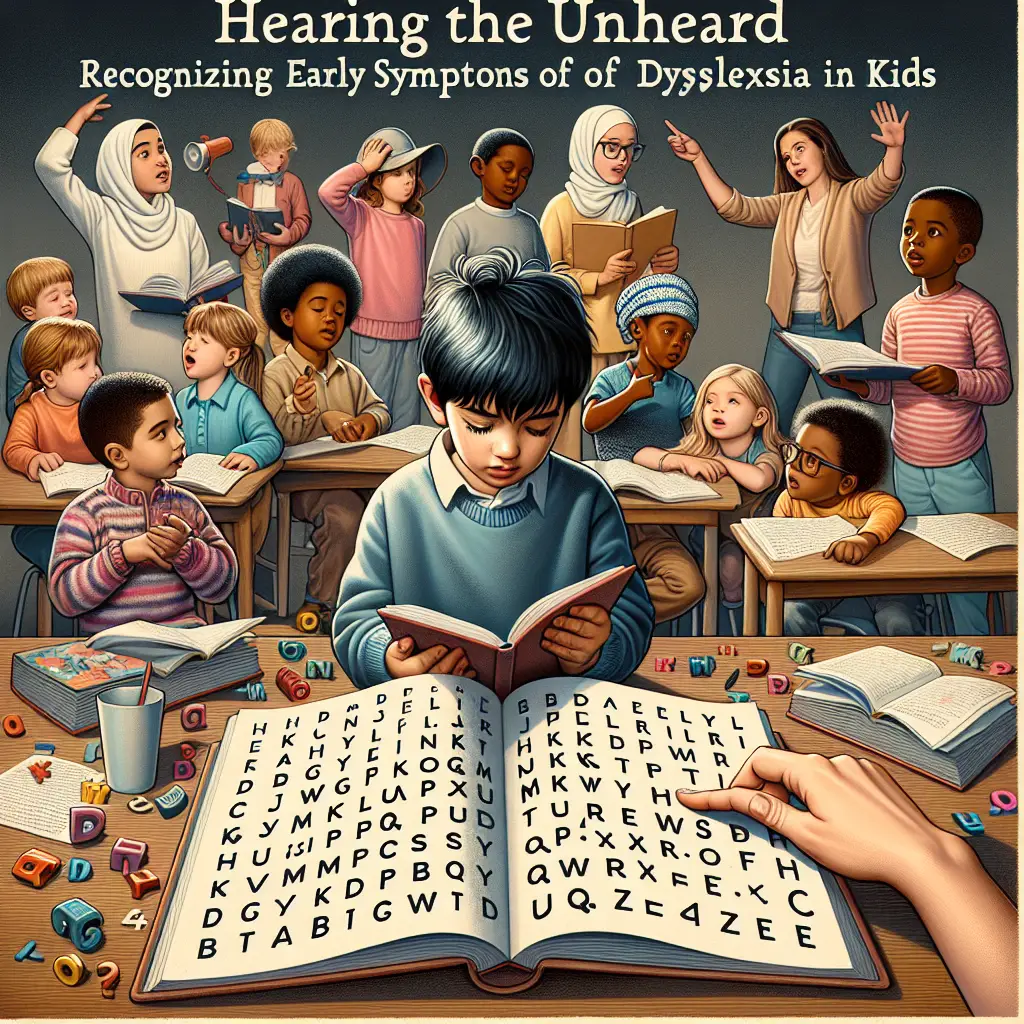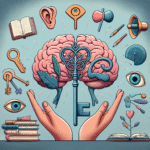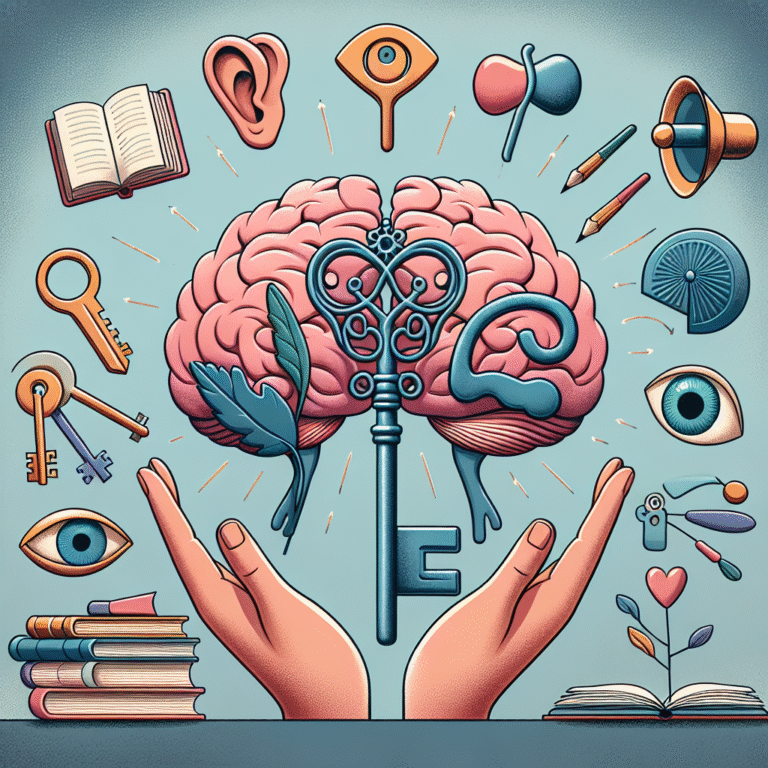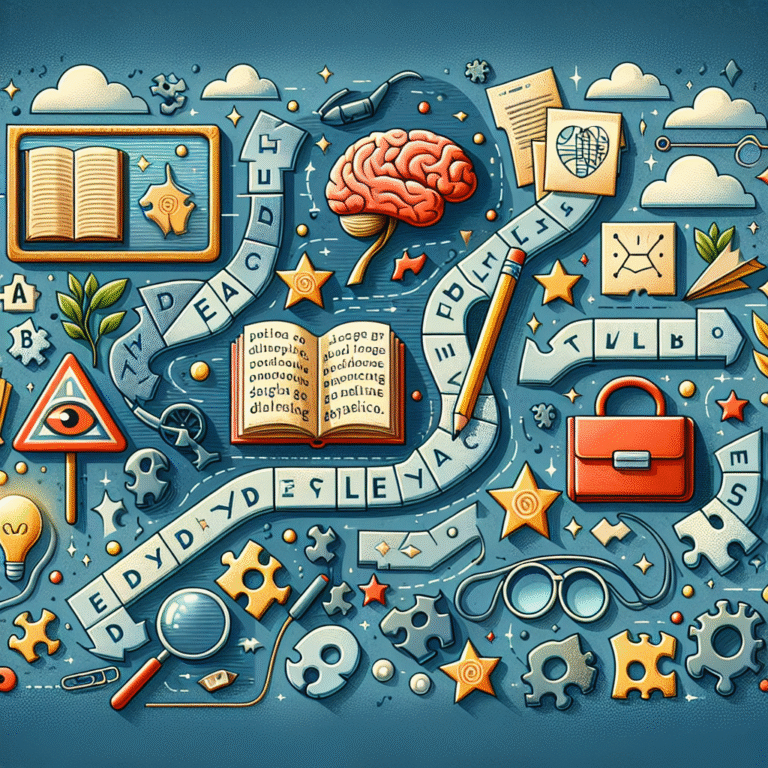
Hearing the Unheard: Recognizing Early Symptoms of Dyslexia in Kids — The Ultimate Guide to Awareness and Understanding
Introduction
Imagine a child sitting in a vibrant classroom filled with laughter and learning. However, amid this joyful environment, one child struggles quietly, feeling isolated and overwhelmed. This child may be grappling with dyslexia, a learning disability that affects reading, writing, and spelling skills. Recognizing early symptoms of dyslexia is crucial in providing the support these children desperately need. In "Hearing the Unheard: Recognizing Early Symptoms of Dyslexia in Kids," we will explore the signs, strategies, and success stories that can help unravel the mystery hidden within the realm of dyslexia.
Understanding Dyslexia
Before we dive into recognizing the symptoms, it’s essential to clarify what dyslexia is. Dyslexia is not merely about reversing letters or words; it’s a specific learning disability characterized by difficulties with accurate and/or fluent word recognition and by poor spelling and decoding abilities. These challenges may stem from deficits in the phonological component of language, leading to difficulties in understanding sound structures and their relation to letters and words.
Recognizing the Early Signs of Dyslexia
1. Delayed Speech and Language Skills
Children with dyslexia often exhibit delays in their speech and language development. If a child is having difficulty pronouncing words clearly or struggles to articulate thoughts coherently, these could be early signs. Listening to how a child constructs sentences or engages in conversation can provide invaluable insights.
Case Study:
Emma, Age 4: Emma’s parents noticed that her vocabulary was limited compared to her peers. While other children chatted away, Emma often resorted to pointing or using simple phrases. After discussions with specialists, it was determined that she was showing early indicators of dyslexia. Early intervention in her speech therapy allowed her to catch up significantly, highlighting the importance of recognizing these signs early.
2. Difficulty with Phonemic Awareness
Phonemic awareness refers to the ability to hear, identify, and manipulate phonemes. Children who struggle with this might find it hard to recognize rhymes, segment words into individual sounds or blend sounds to form words. These skills are foundational for reading.
| Chart: Phonemic Awareness Tasks | Task | Typical Age of Mastery | Indicator of Dyslexia |
|---|---|---|---|
| Rhyme Recognition | Age 4 | Difficulty | |
| Sound Segmentation | Age 5 | Difficulty | |
| Sound Blending | Age 6 | Difficulty |
Analysis: Recognizing these issues during preschool can help in timely intervention, potentially mitigating later struggles with reading.
3. Challenges with Writing and Spelling
Children may display a unique set of writing habits, such as inconsistent spelling of familiar words or excessive mistakes in writing. It’s not uncommon for children with dyslexia to avoid writing tasks altogether, feeling daunted by their difficulties.
Case Study:
Liam, Age 7: Liam loved storytelling but often refused to write his tales in class. His teacher noted he had great ideas but struggled with spelling and organizing his thoughts. A comprehensive assessment revealed dyslexia. With tailored writing strategies, Liam’s confidence soared, illustrating how understanding can unlock potential.
4. Trouble Learning Letters and Sounds
Often, dyslexic children may confuse letters that look similar (e.g., b and d) or may struggle to remember letter names and sounds. Educators and parents should pay attention to how children interact with literacy during their early schooling.
Tip: Use fun, engaging multisensory activities to reinforce letter-sound relationships.
5. Struggles with Math
Research has shown that some children with dyslexia might also have challenges with math, particularly word problems that require reading comprehension. They might misinterpret instructions due to difficulties in processing written information.
The Importance of Early Recognition and Intervention
Recognizing these symptoms early can paly a crucial role in ensuring that children receive the support they need. Eschewing the stigma surrounding dyslexia is vital. By focusing on early intervention, educators and parents can proactively address the unique learning needs of these children.
Key Strategies for Supporting Children with Dyslexia
Multisensory Learning Approaches: Incorporating visual, auditory, and kinesthetic modalities can significantly enhance learning experiences for dyslexic students.
Reading Programs: Programs designed specifically for dyslexic learners, like Orton-Gillingham or Wilson, can promote decoding and comprehension skills effectively.
Technology Aids: Use of audiobooks, text-to-speech programs, and word-processing software with spell-check can support children in their learning journey.
- Parent Involvement: Parents are crucial in advocating for their children. Being informed and actively involved in educational decisions can lead to effective support.
Conclusion
Recognizing the early symptoms of dyslexia in children is akin to hearing sounds that others may overlook. By “Hearing the Unheard: Recognizing Early Symptoms of Dyslexia in Kids,” we empower not only ourselves but also the future generation to tackle these challenges head-on. Understanding the signs, advocating for the right interventions, and fostering a supportive environment can redefine a child’s educational and emotional experience.
FAQs
Q1: What age should parents start looking for signs of dyslexia?
A1: Parents should begin to observe their child’s language development from a young age, particularly around preschool age (3-5 years).
Q2: Can dyslexia be diagnosed by a regular pediatrician?
A2: While pediatricians can identify risk factors or signs, a formal diagnosis typically requires evaluation by a psychologist or educational specialist trained in learning disabilities.
Q3: How can dyslexic children be supported in school?
A3: Schools can provide accommodations such as extended time on tests, access to specialized reading programs, and supportive classroom environments that foster confidence.
Q4: Is there a link between dyslexia and intelligence?
A4: Dyslexia is not a reflection of intelligence. Many dyslexic individuals are highly intelligent and creative thinkers; they simply process information differently.
Q5: Are there any effective therapies for dyslexia?
A5: Numerous effective therapies exist, including structured literacy programs, tutoring, and sometimes speech-language therapy.
Q6: Can dyslexia be outgrown?
A6: Children do not outgrow dyslexia; however, with appropriate strategies and interventions, they can learn to manage their symptoms effectively and achieve success in their educational pursuits.
Through understanding and action, we can move closer to ensuring every child, regardless of their learning differences, has the opportunity and tools needed to thrive. Together, let’s embrace our role in "Hearing the Unheard: Recognizing Early Symptoms of Dyslexia in Kids."






